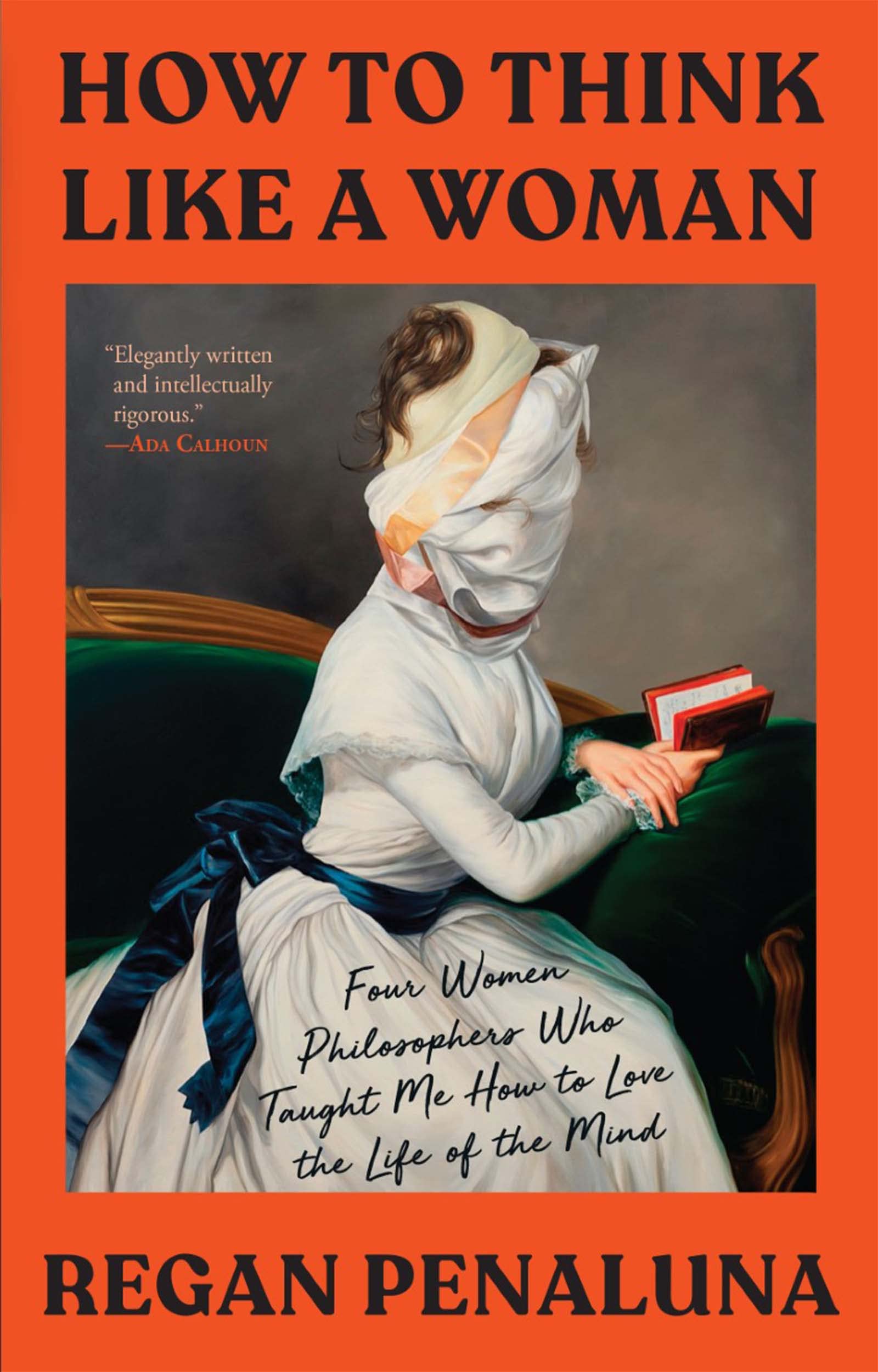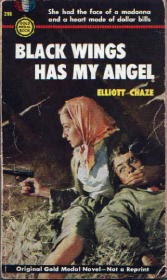The examiner’s question haunted Penaluna. She came to realize that women philosophers intrigued her because they were women philosophers. They weren’t taught in any of her philosophy classes at university, and when Penaluna serendipitously stumbled across Damaris Cudworth Masham, and subsequently Mary Astell, Mary Wollstonecraft, and Catharine Cockburn, she felt “heroic voices from across time cutting through [her] frustration.” Despite their brilliant minds, their ideas were routinely dismissed and their capabilities diminished, and they themselves were overlooked—all because of their sex. Penaluna was shocked at how little had changed in over 300 years.
In her intimate debut work How to Think Like a Woman: Four Women Philosophers Who Taught Me How to Love the Life of the Mind (2023), Regan Penaluna beautifully uncovers the philosophical stories of four influential but scandalously overlooked feminist philosophers of the 17th and 18th centuries, and delicately intertwines her own intellectual and personal journey toward selfhood. Masham, Astell, Wollstonecraft, and Cockburn taught Penaluna—and can teach us—how to love wisdom in a world full of voices that, for millennia, have screeched that “thinking like a woman” is flawed.
¤
SKYE CLEARY: What was it about these four women in particular—Damaris Cudworth Masham, Mary Astell, Mary Wollstonecraft, and Catharine Cockburn—that enchanted you?
REGAN PENALUNA: I no longer felt alone. I chose to study philosophy because I had always been drawn to the big questions—Is there a God? What is the purpose of life? How should I live?—and I hoped one day to have a community of friends and colleagues devoted to them too. But early on in my studies, I struggled to belong, and I became unsure whether I was right for philosophy. Some of this struggle was due to my ineptitude, the doubts of a novice in a new environment, and perhaps also a native shyness. The rest of my struggle was because I was a woman, and as such, my work was brushed aside as unserious, and my abilities were questioned, sometimes to my face.
One memorable day, in a seminar, my philosophy professor asked his students whether women had the wits to be true philosophers. This was a horror from which it took me years to recover. I’m not sure “recover” is the word. Rather, it was the dawn of an awakening to the reality of how some men pose these questions without care or a sense of responsibility for their effects. That is, how questioning the minds of women can affect their self-perception and, ironically, make it harder for them to achieve intellectual greatness. Philosophy and science are tools that, when used without a moral compass, can do great harm. I don’t think many men truly appreciate what it is like to walk into a room full of people who doubt the powers of your intellect, and how over time this can have a self-silencing effect. The day that most male philosophers and scientists are open to this possibility is when we can seriously start talking about what a level playing field might look like.
When I read the works of Astell, Masham, Cockburn, and Wollstonecraft—who existed well before the 20th century, and, coincidentally, were the first women philosophers I’d ever studied—I was shocked to find aspects of my own experience reflected in their writings. They were conversant in the leading epistemologies and metaphysics of their age, but were also passionately devoted to the condition of women. Their obsession with the woman question stemmed from the ways men repeatedly underestimated and suppressed them personally and, as they came to observe, women as a class.
These women philosophers were angry and hungry to build new worlds using the tools of philosophy that they fashioned to suit their needs and inquiries. Through them I began to see a way forward. I realized that I didn’t need to give up the pleasures of an intellectual life. I, too, was angry and hungry, and because of them, I now had the hope of a home.
Why is it important to pay attention to these neglected voices in philosophy?
I tend to agree with Nietzsche that psychological motivations generate philosophies, and biases are entrenched in even the most abstract and well-intentioned theories. This isn’t to say that philosophies are reducible to an unconscious will, but that it is a powerful force shaping philosophical visions. It’s not a fluke that some of the greatest philosophers in the Western canon were white men who had the leisure to do philosophy courtesy of women and slaves who tended to their domestic needs, and that these same philosophers’ social, political, and ethical theories perpetuated this social structure.
Most of these canonical philosophers did not go unchallenged, but unfortunately, we don’t often learn about that. The women I write about were critical of Enlightenment projects that extolled “human rights” because they often excluded women, people of the “lower ranks,” non-Europeans, and so on. Mary Astell attacked Hobbes’s “solitary” state of nature as implausible because we enter the world as social beings (any parent understands this). This is reminiscent of the arguments raised centuries later by feminists who critiqued John Rawls for grounding his political philosophy on the notion of a person independent of commitments and social ties. If marginal thinkers such as these women philosophers had been better known, imagine how much richer the history of ideas would be, how much more diverse the philosophical canon would be, and—possibly—how much more equitable the world might be today.
I was struck by how dreadfully famous philosophers have behaved toward women and people of color. For example, you tell some gruesome stories about so many philosophical giants: Socrates, Abelard, Bacon, Descartes, Rousseau, Kant, Wittgenstein, Aristotle, Pythagoras, Hobbes, Spinoza, Hegel, Darwin, Nietzsche, Hume, and more. They were predators, rapists, and pedophiles. And sexism runs deep in their philosophies. None of the women philosophers in your book were perfect either. They were flawed humans, and often had their own prejudices. Don’t we all? Given that there is so much misogyny and racism at the core of Western philosophy, how should we study them? Can philosophers’ personal lives and views be separated from their ideas?
What should we do with the work of monstrous men—or women, for that matter? I haven’t arrived at a satisfactory answer yet, but if pressed I would say that the mainstream default in philosophy, which is that ideas can be not only abstracted from personal life, but also entirely divorced from it, isn’t tenable. As if we could be godlike and arrive at a “view from nowhere.” An antidote to this fantastical vision of philosophy can be found in feminist philosophy, critical race theory, and many other subfields, and in the work of marginalized philosophers. I’m also drawn to the work of contemporary philosopher Amia Srinivasan, who points to the relevance of values and life experiences to doing philosophy. She argues that what we find persuasive is in part a function of the circumstantial features of ourselves as bodies situated in a particular time and place. I would like to see the ideas of the canonical philosophers taught with greater historical and personal context, and in dialogue with their critics, including the women philosophers I write about.
Of course, not all philosophers of the past were sexist.
You’re right. John Stuart Mill was an incredible champion of women, as was François Poulain de la Barre, who wrote a treatise in 1677 titled The Woman as Good as the Man. Plato and Augustine are also interesting cases. In the Republic, Plato suggests that women have the same intellectual powers as men, which is why they can be active in political and philosophical life, but not to the same degree of power. So, says Plato, women are better as men’s sidekicks. Augustine disagreed with the popular view in his day, inspired by Aristotle, that women were men’s natural subordinates. Rather, he ascribes women’s subjection to their will. He argues that Eve freely chose to eat the forbidden fruit, which doomed all her female descendants to freely choose their submission to earn salvation.
One of the main issues that men had with these women was that they enjoyed sex!
Yes. Let’s just say these women were familiar with the pleasures of the mind and the body. Amen. Masham possibly had an adulterous affair with Locke while married to another man, and she wrote about how the desire a woman has for her paramour needn’t take anything away from the love she has for her own child. Astell was serious and not into partying, but this lady knew how to describe a female orgasm. Cockburn had to really get her husband to open his heart to her and, I think, to enjoy sex. Wollstonecraft absolutely loved sex and was unafraid to say so. Once, at a party, she met a woman who proudly expressed her disinterest in sex. Wollstonecraft’s response: “Too bad for you!”
Mary Astell was one of the first women philosophers you discovered after having not studied any in your three years in graduate school. She was, as you say, “one of the most well-known intellectuals of her age.” And I love how Astell argued that God gave her a brain so She must have wanted Astell to use it.
Astell is a firecracker! The title of her first book reeled me in: A Serious Proposal to the Ladies. No title in early modern philosophy had ever addressed me as a woman. Most philosophers were silent on this topic (Hobbes and Descartes) or disparaging (Malebranche, Spinoza). I loved how openly disgusted she was that so many men assumed women couldn’t hold abstract thoughts in their head and had nothing of value to say about the human condition or the universe. I identified with her frustration. I loved her brassiness. I quickly learned more about her life and work: she was a woman who lived on her own and who proposed the radical idea of an all-women’s college where students could stay indefinitely away from the society of men. She was very well known in her day, and her works went through many editions. But after her death in 1731, she was quickly forgotten.
Why? Social forces were against her. In the decades following her death, English society became more conservative, emphasizing the importance of mothers and women’s place in the home. The new science of sex differences also supported this view with “evidence” of women’s maternal destiny and cognitive inferiority. But these social forces were no match for the German historians of philosophy who, in the 18th century, reshaped the entire canon according to Kantian values. This had devastating effects for philosophical projects that had different orientations from Kant’s, including projects by many women philosophers, African philosophers, and Asian philosophers, which the Kantian historians deemed “unphilosophical.” This Kantian-inspired canon was adopted by universities across Europe and still characterizes what’s studied in most philosophy programs in the United States today.
What does it mean to “think like a woman”? In one place, you suggest that, traditionally, “to think like a woman is to be regularly ashamed of oneself,” but you seem to come to the conclusion that to think like a woman is “to be satisfied with ambiguity.”
The few sections in the book where I posit what it means to think like a woman, I’m referring to the ways I was habituated to suppress my voice and self-interest or forced into conundrums due to the patriarchal structure of society. Astell, Masham, Cockburn, and Wollstonecraft also talk about this undesirable aspect of being a woman that few of us seem to escape.
I actually don’t know what it means to think like a woman, and I question whether there is even such a thing. In comparative terms with men, I have a grounding intuition based on my experience and observation that there are women capable of as much as the greatest men, but invisible barriers make it difficult for them to achieve full engagement.
My aim in this book isn’t to provide a definitive answer. Rather, it’s to take a step back, like a historical painter, and represent a larger moment or trend: in this case, the long-standing cultural tradition of suppressing women. I’m interested in pointing to how “thinking like a woman” has been presented, by whom, and with what interests. Part of my depiction highlights women who vociferously argued against sexist notions of what it means to think like a woman, and how these women were silenced, if not during their lifetime, then soon after. My research into philosophy and the history of science revealed to me an overwhelming bias for arguments in favor of women’s inferiority, which were all eventually proven to be specious. This terrible track record makes me skeptical of the latest theories of cognitive differences, especially those that assert male superiority, because, historically, such differences have been used to justify the subordination of women.
The book weaves your own story with the stories of these four philosophers in a beautiful and seamless way. Was there a thread that guided you?
I wanted to tell the story of Western civilization’s stubborn persistence to erase women and their ideas. I also wanted to draw attention to the lives and ideas of women who escaped its gravitational pull. At first, it wasn’t obvious to me how I would do this. I tried writing straight biographies of Astell, Masham, Cockburn, and Wollstonecraft, but it didn’t work. What was missing was my voice. I resisted this for a long time. As a trained academic and journalist, it was unnatural for me to step into any project as a character. But this is exactly what this book needed. Despite the great differences between me and these women from the past, and their differences from one another, our lives were shaped by this ongoing horror—and it is a horror. Once I fully grasped this connection, I made my story the framing narrative, and the rest fell into place.
Your discussion of Wollstonecraft reminded me of Myisha Cherry, Audre Lorde, and others who argue for the transformative power of rage. “[I]f you’re a woman and you care about your freedom, you cannot help but harbor some anger and frustration. Whether it’s expressed in a thought to yourself or in an essay,” you write, “to think like a woman, to produce and create like a woman, often involves anger. It’s a feature of a woman’s psyche as she comes into her own in a world that (still) does not want her to.” What should we do with that rational, justifiable anger?
What should we do with our anger? Create. Express. Anything but repress. I had delicious fun with mine. When I wrote my chapter “On the Prejudices of Philosophers,” I’d grown sick and tired of how I’d been trained to excuse the sexist and racist comments of great thinkers as products of their time or as minor faults in otherwise beautiful ethical or metaphysical systems. Of course, this was a convenient way to forestall any sustained feminist critique, which enraged me. What if, I thought, I did the opposite of how I’d been trained, and told a history of philosophy through these comments? Rather than treating these bigoted comments as superficial blemishes on the canon of thought, [I would use them to] form the spine of a grotesque beast.
Even though it took me a while to come to terms with my anger and harness it, I had a harder time writing about my sadness and passivity. At least anger is active. There is an ugliness to the state of sad passivity that many women find themselves in, which I think, as a culture, especially American culture, we are loath to recognize, let alone sit with. We’d rather focus on women as empowered, cool, unaffected. I’m skeptical of anything that represses, and sometimes anger can hide a deeper sadness. But I think noticing the ways that patriarchy infantilizes women, stunts them—although depressing—is crucial to releasing its grip on our lives.
¤
Regan Penaluna is a writer and journalist based in Brooklyn. She has a PhD in philosophy and a master’s degree in journalism.
Skye C. Cleary, PhD, MBA, is the author of How to Be Authentic: Simone de Beauvoir and the Quest for Fulfillment (St. Martin’s Press, 2022) and Existentialism and Romantic Love (Palgrave Macmillan, 2015), and co-editor of How to Live a Good Life: A Guide to Choosing Your Personal Philosophy (Vintage, 2020). She teaches at Columbia University, Barnard College, and the City College of New York.



